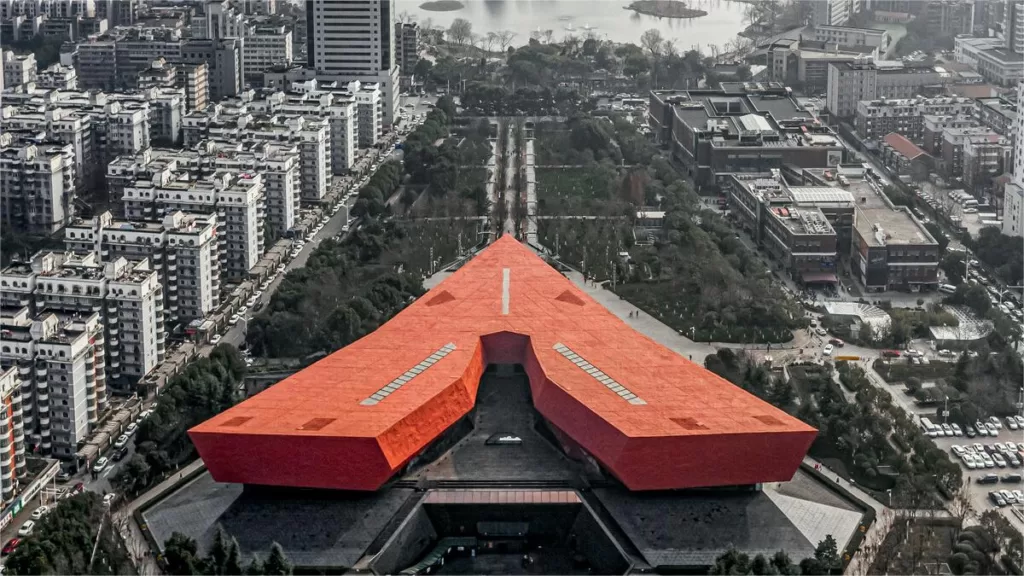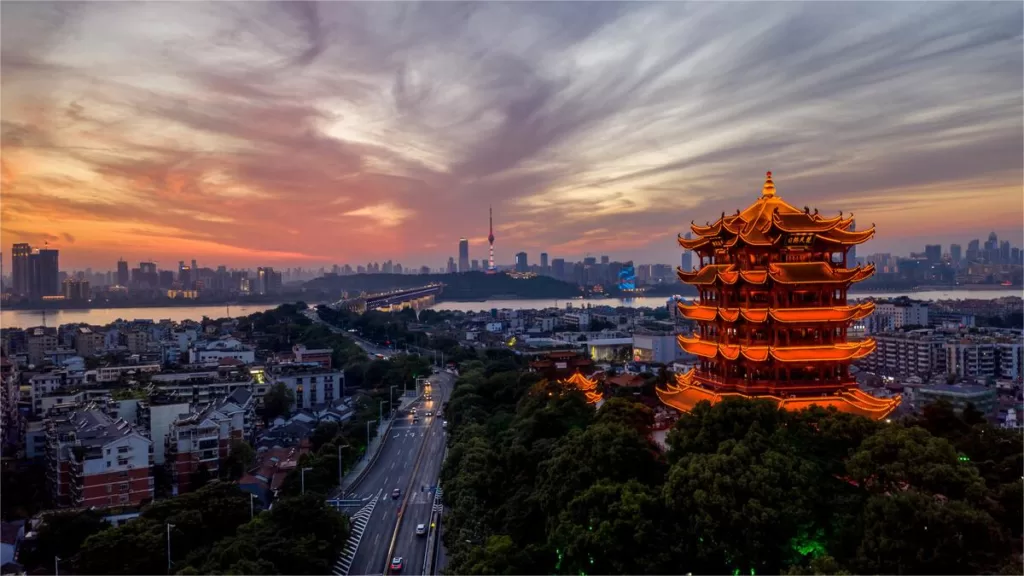The Changchun Taoist Temple (长春观), located in Wuhan, is a historical and culturally significant place of worship, known for its rich history and unique architectural blend of Tibetan and European styles. Established during the Yuan Dynasty, this temple has undergone multiple reconstructions, particularly during the Ming Yongle period and the Qing Kangxi era (1661-1722). It holds a special place in Taoism as one of the major spiritual centers in southern China and is dedicated to the teachings of the Quanzhen School, with a particular emphasis on the disciple of Quanzhen’s founder, Qiu Chuji, also known as Changchun Zi.
According to legend, Qiu Chuji played a pivotal role during the Yuan Dynasty when the Mongol army invaded the region. He advised the military commander not to indiscriminately harm the local populace, and in gratitude for his benevolence, the people of the area built the Changchun Taoist Temple in his honor.
Table of Contents
- Basic Information
- Location and Transportation
- Map of Changchun Taoist Temple
- Highlights of Changchun Taoist Temple
- Vlog about Changchun Taoist Temple
- A Brief History of Changchun Taoist Temple
- Useful Tips Summarized from Reviews
- Attractions near Changchun Taoist Temple
Basic Information
| Estimated Length of Tour | 1 – 2 hours |
| Ticket Price | 10 RMB |
| Opening Hours | 8.00 – 16.30 |
| Telephone Number | 0086-027-88842090 |
Location and Transportation
Changchun Taoist Temple is located in the eastern part of Wuhan. It specifically resides at the northeastern corner of Wuchang District, nestled on the southern slope of Shuangfeng Mountain and in the central area of Huanghu Mountain. The precise address is 269 Wuluo Road, Wuchang District, Wuhan, Hubei Province. To get there, you can choose one of the following ways:
Bus: Take bus 15, 401, 411, 413, 510, 522, 564, 569, 593, 596, 636, 701, 703, 715, 728, 797, 804, or 811 and get off at Wuluo Road Grand East Gate Stop (武珞路大东门站, Wuluolu Dadongmen Stop).
Metro: The closest metro station to Changchun Taoist Temple is Xiaodongmen (小东门, Small East Gate) on line 7. After getting out of the station from Exit C, walk about 500 meters to the south to reach the temple.
Map of Changchun Taoist Temple

Highlights of Changchun Taoist Temple
The Seven Immortals Hall

The Seven Immortals Hall is the main hall of Changchun Taoist Temple and is dedicated to seven disciples of Wang Chongyang, the founder of the Quanzhen School. These seven immortals include Qiu Chuji, who is known as the “Changchun Zi” and continued to spread and develop the teachings of the Quanzhen School. The Quanzhen School, also known as the Dragon Gate School, is still highly regarded within Taoism. Every year, on the 19th day of the first lunar month, a special celebration known as the “Yanjiu Festival” is held in honor of Qiu Chuji.
Architectural Style

One of the distinctive features of Changchun Taoist Temple is its architectural style, which uniquely blends Tibetan and European influences. There are two primary reasons for this distinctive architectural fusion. First, during the late Qing Dynasty, the temple was significantly expanded under the auspices of the official Guan Wen, who was of Manchu heritage and held strong beliefs in Tibetan Buddhism. As a result, the craftsmen employed for the expansion incorporated Tibetan symbols and motifs such as elephants and saffron flowers into the temple’s decoration.

The second reason for the unique architectural blend is attributed to Hou Yongde, the abbot of Changchun Taoist Temple in the late Qing Dynasty. He initially served as a military officer under General Zuo Zongtang before embracing a monastic life and taking charge of the temple. Under his influence, the temple’s construction features a combination of European and traditional Chinese architectural elements, culminating in the creation of the Daoist Canon Repository, a one-of-a-kind Taoist building in China with European-style architecture as its primary design. Its eaves are adorned with traditional cement “stacking” decorations, a craftsmanship that has become rare and almost forgotten.
Astronomical Map

Another notable feature of Changchun Taoist Temple is the “Tianwen Map,” an astronomical map that Taoist scholars have left in only three locations in China. These maps, inscribed with the word “Imperial Decree,” contain valuable celestial knowledge and insights. Unfortunately, during the Cultural Revolution, the maps in Hangzhou and a Taoist temple in Shaanxi were destroyed, leaving the Changchun Taoist Temple as the only remaining site where this precious knowledge is preserved.
Vlog about Changchun Taoist Temple
A Brief History of Changchun Taoist Temple
Changchun Taoist Temple was built during the Yuan Dynasty by disciples of Qiu Chuji to commemorate his role in persuading the Yuan army to halt their southern campaign, thus saving countless lives. Its origins trace back to the Northern Song period when Yuanqing Temple was established on Shuangfeng Mountain, following the teachings of Jiangxi’s Gezao Fulu Golden Elixir School. In the early Yuan Dynasty, Changchun Temple was built on this site.
The temple underwent repairs and reconstruction during the Ming Yongle period (1414) and the Qing Kangxi period (1687) but was destroyed by warfare in 1852. During the Ming Dynasty, it was known as a flourishing center of Taoism in Hubei, attracting thousands of followers. The temple housed a complete set of the Ming edition of the “Zhengtong Daozang,” one of only four remaining copies in China before the founding of the People’s Republic.
In 1774, the renowned philologist Qian Daxin visited the temple to study Daoist scriptures and wrote the “Preface to the Three Caverns of Daoism” in the Laicheng Tower. The temple was widely regarded as a major Taoist center in the Jiangchu region. In 1863, the 16th-generation Longmen sect disciple He Hechun came from Wudang Mountain to lead the temple’s restoration, reconstructing key halls in a Ming architectural style. Further renovations occurred in 1865 and 1925, with notable contributions from warlords and officials.
During the Northern Expedition in 1926, the temple was used as a frontline command center, suffering damage from artillery fire but was later restored. In 1952, following the construction of the Wuhan Yangtze River Bridge, the Lüzu Pavilion was relocated here. The temple suffered losses during the Cultural Revolution but was restored in 1982, with religious activities resuming in 1984.
Useful Tips Summarized from Reviews
Exploring the Temple: Changchun Taoist Temple comprises several halls and pavilions, making it an ideal location for a leisurely stroll and exploration. Plan to spend around 1 to 1.5 hours to fully appreciate the temple’s architecture, artwork, and serene atmosphere.
Scenic Views: Situated amidst the mountains, Changchun Taoist Temple offers picturesque views of the surrounding landscape. Take advantage of elevated vantage points within the temple complex to admire the scenic beauty, especially during autumn when the foliage turns vibrant shades of red and yellow.
Interaction with Cats: Keep an eye out for the resident cats that inhabit the temple grounds. These friendly felines provide a charming addition to the temple’s ambiance and offer visitors the opportunity to interact with them through petting and gentle play.
Adjacent Dining Options: Adjacent to Changchun Taoist Temple, you’ll find vegetarian restaurants offering simple and homely meals. While the food may be average in taste, the restaurants tend to attract large crowds, especially during peak dining hours. Be prepared to wait for a table, particularly around lunchtime when the wait can extend to over half an hour.
Exploring Nearby Attractions: Adjacent to the temple is Chenghuang Temple, a Taoist temple dedicated to the City God. Visitors can explore Chenghuang Temple free of charge, adding another dimension to their cultural and spiritual experience.












I experienced a vegetarian meal at Changchun Temple for just 10 yuan per person. It was light and delicious, and it might just be the healthiest meal I’ve had since coming to Wuhan.
Inside the Lu Zu Temple, I was surprised to find a reclining statue of Lu Dongbin, which is quite rare.
On the first and fifteenth of each month, there is a blessing ceremony at Changchun Temple, where you can hear the priests chanting scriptures in the Wuhan dialect. After your visit, don’t rush to leave! Be sure to try the turtle jelly (龟苓膏) available here, which is said to be made using ancient recipes from the temple; it has a unique taste that is both bitter and sweet.